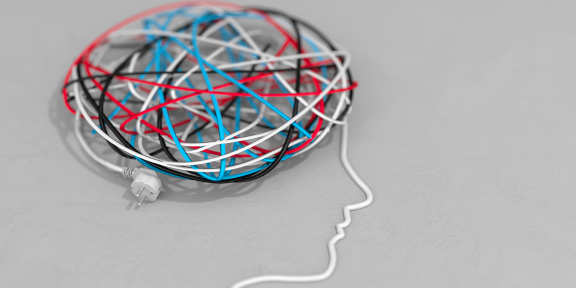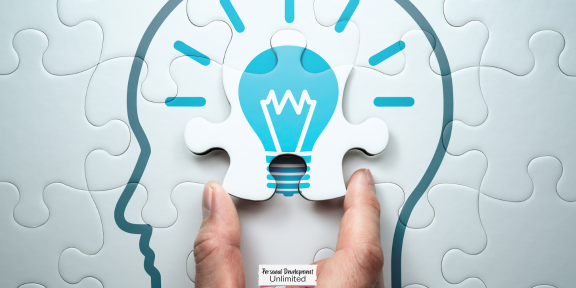Life is full of challenges and obstacles that can hinder us from achieving our goals and dreams. Whether it’s a personal problem or a professional challenge, mastering the art of problem-solving can unlock your potential and help you overcome any hurdle that comes your way.
In this article, we will explore the mindset, strategies, and techniques required to become an effective problem solver. We will provide step-by-step guidance on the problem-solving process, and offer practical tips to help you overcome obstacles and enhance your problem-solving skills.
So, let’s dive in and discover how you can unleash your potential through the power of problem-solving!
Understanding the Problem Solving Mindset
Problem-solving is not just a set of techniques or strategies, it is a mindset. To be an effective problem solver, you need to approach challenges with a proactive and positive attitude. Instead of feeling overwhelmed or defeated, you must embrace problems as opportunities to learn and grow.
An important aspect of the problem-solving mindset is adopting a systematic approach. This means breaking down complex problems into smaller, more manageable components. By doing so, you can tackle each part of the problem individually, rather than becoming overwhelmed by the entire challenge. Additionally, a systematic approach allows you to track your progress more effectively, ensuring you stay on track and make steady progress towards a solution.
Developing a Problem Solving Approach
To develop a problem-solving approach, you must first acknowledge that problems are a natural and unavoidable part of life. Instead of reacting negatively to problems, you must learn to approach them with curiosity and a desire to find solutions. This shift in mindset will open up new opportunities and allow you to approach challenges more effectively.
Once you have a positive attitude towards problem solving, you can begin to develop strategies and techniques for approaching challenges. This includes gathering information, brainstorming ideas, evaluating potential solutions, and implementing the best course of action. By following a structured and systematic approach, you can overcome obstacles and achieve success.

Developing Problem Solving Strategies
Effective problem-solving requires a systematic approach that involves analyzing the problem, generating solutions, and implementing them. Here are some problem-solving strategies that can help you overcome challenges and achieve success:
Brainstorming
Brainstorming involves generating ideas through a group or individual process. It is a creative problem-solving technique that can help you come up with innovative solutions. Start by defining the problem and then generating as many ideas as possible. Don’t worry about the feasibility of the ideas at this stage. Once you have a list of potential solutions, evaluate each one based on its pros and cons and select the most suitable option.
Critical Thinking
Critical thinking involves analyzing and assessing information to form a judgment. It is a useful problem-solving technique because it can help you identify the root cause of the problem and find the most effective solution. To apply critical thinking, start by gathering relevant data and information about the problem. Then, analyze the information, look for patterns or trends, and draw conclusions. Finally, use your conclusions to develop a solution.
Decision Making
Decision making is the process of selecting the best option from a set of alternatives. It is a problem-solving technique that can help you choose the most effective solution. To make sound decisions, start by defining the problem and generating a list of possible solutions. Then, evaluate each solution based on objective criteria such as cost, time, and feasibility. Finally, choose the most suitable option.
By applying these problem-solving strategies, you can develop effective solutions, overcome obstacles, and achieve success.

The Problem Solving Process
Effective problem-solving requires a systematic approach that helps individuals navigate complex challenges. The problem-solving process involves several stages that build upon one another to generate viable solutions. Here is a step-by-step guide to the problem-solving process:
- Problem Identification: Begin by defining the problem clearly. Identify what needs to be solved and why it is important to solve it. Ask questions and gather information to gain a comprehensive understanding of the problem.
- Data Gathering and Analysis: Collect relevant data and analyze it to gain insights into the problem. This stage requires careful consideration and attention to detail, as the accuracy of the analysis will influence subsequent stages.
- Solution Generation: Brainstorm potential solutions and evaluate their feasibility. Consider the pros and cons of each option, and select the one that is most practical and effective.
- Implementation: Develop an action plan and implement the chosen solution. This stage requires effective communication, collaboration, and coordination with stakeholders to ensure smooth execution.
- Evaluation: Assess the results of the solution and determine its effectiveness. Learn from the experience to identify areas for improvement and adjust the solution as necessary.
The problem-solving process can be iterative, and it may be necessary to revisit earlier stages to refine the solution. By following a structured approach, individuals can increase their chances of success and achieve optimal outcomes.

Overcoming Obstacles in Problem Solving
Problem-solving is not always a straightforward process, and obstacles can arise at any stage. However, with the right mindset and approach, these obstacles can be overcome. Here are some common obstacles that individuals may encounter and strategies for overcoming them:
1. Lack of Information
One of the biggest obstacles in problem-solving is a lack of information. Without sufficient data, it can be difficult to identify the root cause of the problem or develop an effective solution. To overcome this obstacle, it is important to gather as much relevant information as possible. This may involve conducting research, seeking input from others, or using data analysis tools.
2. Negative Thinking
Negative thinking can be a significant obstacle to problem-solving. It can lead to feelings of discouragement and hopelessness, making it difficult to make progress. To overcome this obstacle, it is important to adopt a positive mindset. Focus on the opportunities and possibilities that can arise from solving the problem. Embrace failure as a learning opportunity and stay motivated by celebrating small successes along the way.
3. Lack of Creativity
Another common obstacle is a lack of creativity. When faced with a problem, it can be challenging to think outside the box and come up with innovative solutions. To overcome this obstacle, it is important to foster creativity. This may involve brainstorming sessions, exploring different perspectives, or taking breaks to clear your mind and gain new insights.
4. Emotional Attachment
Sometimes, individuals can become emotionally attached to a certain solution or outcome, making it difficult to consider alternative options. To overcome this obstacle, it is important to remain open-minded and objective. Consider all possible solutions and weigh the pros and cons of each. Take a step back, and try to view the problem from a fresh perspective.
5. Lack of Focus
Finally, lack of focus can be a significant obstacle to problem-solving. It can be easy to get bogged down by details or distracted by other tasks, leading to a loss of momentum. To overcome this obstacle, it is important to stay focused on the problem at hand. Prioritize your tasks, break the problem down into manageable steps, and stay committed to the process.
Remember, problem-solving is not just about finding a solution. It is about developing a mindset and approach that allows you to tackle challenges effectively, with creativity, focus, and perseverance.
Enhancing Problem Solving Skills
Problem-solving skills are essential for personal and professional growth. The ability to analyze situations, identify solutions, and implement effective strategies is critical in achieving success. Here are some strategies to enhance your problem-solving skills:
- Develop analytical thinking: Analyzing situations from different perspectives can help you identify problems and come up with effective solutions. Enhance your analytical thinking by practicing critical thinking exercises, reading complex texts and articles, and seeking out challenging tasks.
- Cultivate creativity: Creativity and problem-solving go hand in hand. Brainstorming ideas and exploring unconventional solutions can lead to breakthroughs. Engage in activities that stimulate your creativity, such as art, writing, or music.
- Practice adaptability: Being adaptable allows you to adjust your problem-solving approach according to changing circumstances. Practice being flexible and open to new ideas by trying out new experiences, learning new skills, and taking on different roles and responsibilities.
Remember, enhancing problem-solving skills is a continuous process. Keep seeking new challenges, learning new techniques, and refining your approach. With time and practice, you can become a master problem solver and unlock your true potential.

Applying Problem Solving in Real-Life Scenarios
So you’ve learned the essential problem-solving techniques and skills, but how do you put them into practice? The answer is simple: apply them to real-life scenarios. By doing so, you’ll be able to sharpen your skills and gain valuable experience that you can use to solve more complex problems.
Whether you’re facing personal or professional challenges, the problem-solving approach remains the same. It’s all about identifying the problem, gathering data, analyzing it, generating a solution, and implementing it. However, the real challenge lies in adapting this approach to each situation and customizing it accordingly.
Take the example of a startup facing financial problems. The first step would be to identify the root cause of the problem. Is it due to poor sales or ineffective cost management? Once the problem has been identified, data must be gathered to analyze the situation. The team must then brainstorm possible solutions and evaluate their feasibility. Finally, the most appropriate solution must be implemented and continuously monitored for effectiveness.
The above problem-solving approach can be applied to any scenario, whether it’s a personal issue or a complex business challenge. The key is to remain proactive, positive, and focused on finding a solution.
The greatest glory in living lies not in never falling, but in rising every time we fall. – Nelson Mandela
The above quote by Nelson Mandela perfectly captures the spirit of problem-solving. It’s not about being perfect or never making mistakes. It’s about learning from failures and getting back up every time you fall.
By applying problem-solving techniques to real-life situations, you’ll not only overcome challenges but also develop a problem-solving mindset that will serve you well throughout your life. So don’t be afraid to tackle problems head-on, and never give up until you’ve found a solution.

Problem Solving in Team Settings
Problem-solving is a valuable skill in any workplace, and it becomes even more powerful when applied in a team setting. Collaborative problem-solving allows for diverse perspectives and ideas to be shared, ultimately leading to more creative and effective solutions.
However, working in a team environment can also present challenges to problem-solving. Individual egos, miscommunication, and conflicting ideas can cause delays or breakdowns in the solving process.
Effective Communication
To overcome these challenges, effective communication is key. Encouraging open and honest dialogue among team members is crucial for success. Each member should feel comfortable expressing their ideas and concerns, and respectful listening should be practiced by all.
Furthermore, taking the time to clearly define the problem, objectives, and roles and responsibilities for each team member can prevent misunderstandings and keep everyone aligned on the project’s goals. As a team leader, it’s important to lead by example and foster an environment of mutual respect and trust.
Conflict Resolution
Another important aspect of problem-solving in a team setting is the ability to resolve conflict effectively. Recognizing that conflict can be healthy and lead to positive outcomes, team members should approach disagreements with a collaborative mindset and the intention to find a resolution that benefits everyone.
Encouraging compromise, identifying common goals, and focusing on interests rather than positions can all contribute to successful conflict resolution.
Strategies for Effective Teamwork
There are several strategies that can be implemented to enhance teamwork and optimize problem-solving outcomes. One effective approach is to assign specific roles and responsibilities to each team member based on their individual strengths and expertise. This ensures that everyone is contributing their unique skills to the project and working together to achieve a common goal.
Another helpful strategy is to set clear timelines and goals for the project, with regular check-ins and updates to ensure progress is being made. This helps keep team members accountable and motivated, while also providing opportunities to address any issues or challenges that may arise.
By utilizing effective communication, conflict resolution, and teamwork strategies, problem-solving in a team setting can lead to powerful and innovative solutions that benefit all involved.

Advanced Problem-Solving Techniques
While basic problem-solving techniques can help in tackling simple issues, more complex challenges require advanced strategies. Here are some methodologies that can help:
Root Cause Analysis
This technique aims to identify the root cause of a problem rather than just addressing the symptoms. It involves a detailed analysis of the problem and its contributing factors. Once the root cause is identified, steps can be taken to eliminate it, resulting in a permanent solution.
Six Sigma
Six Sigma is a data-driven methodology that aims to reduce defects and minimize variability in processes. It involves statistical analysis and process improvement techniques to optimize performance and achieve high levels of quality.
Design Thinking
Design thinking is a human-centered approach to problem-solving that emphasizes on understanding the user’s needs and developing creative solutions. It involves empathy, ideation, and prototyping to create innovative and effective solutions.
These advanced problem-solving techniques require specialized knowledge and expertise. However, by applying them in appropriate situations, you can achieve breakthrough results and create sustainable solutions.
Conclusion
Effective problem-solving skills and techniques are essential for success in today’s fast-paced and ever-changing world. They allow you to approach problems with confidence, creativity, and resilience, enabling you to find innovative solutions that others may overlook.
Frequently Asked Questions About Problem Solving
As problem-solving can be a complex and challenging process, it’s normal to have questions or doubts about it. In this section, we’ll answer some of the most frequently asked questions to help you gain a better understanding of problem-solving.
What is problem solving?
Problem-solving is the process of identifying, analyzing, and resolving challenges or obstacles. It involves using critical thinking, creativity, and logical reasoning to develop effective solutions.
Why is problem solving important?
Problem-solving is a valuable skill that can help you overcome challenges and achieve success in various areas of life. It allows you to think outside of the box, approach situations with a positive mindset, and develop effective strategies.
What are the key steps of the problem solving process?
The problem-solving process typically involves the following steps:
- Identifying the problem
- Researching and gathering data
- Analyzing the information
- Generating and evaluating solutions
- Implementing and monitoring the chosen solution
How can I improve my problem solving skills?
There are several ways to enhance your problem-solving skills, including:
- Practicing critical thinking and analysis
- Developing creativity and thinking outside of the box
- Strengthening your communication and collaboration skills
- Continuing to learn and seek new information and ideas
What are some common obstacles to effective problem solving?
Common obstacles to effective problem-solving can include a lack of information or resources, biased or limited thinking, and feelings of stress or anxiety. It’s important to stay focused and motivated while using various problem-solving strategies and techniques to overcome these challenges.
How can problem solving be applied in a team setting?
Effective problem-solving in a team setting requires clear communication, collaboration, and the ability to identify and address conflicts. It’s important for team members to work together cohesively, playing to each other’s strengths and utilizing their diverse perspectives to develop optimal solutions.
Hopefully, these answers have helped you gain a better understanding of problem-solving and its importance in personal and professional growth. Remember, the more you practice problem-solving, the more you’ll develop your skills and unleash your full potential.
Personal Development Unlimited is your go-to place to be You, Without Limits. We bring together personal development and self-improvement articles, books, courses and videos in one place. Find your self-growth opportunities easily.
Comments
0 comments



